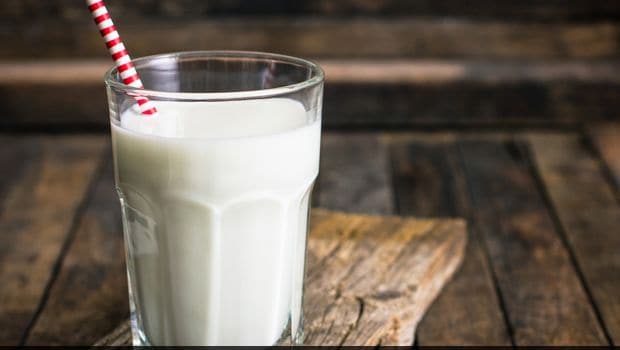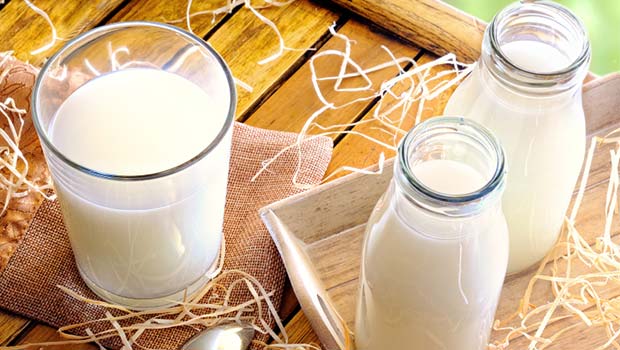Every mammal starts it’s life with milk as the only source of food that contains all the essential nutrients required for growth and development. Mother’s milk is also the easiest to digest for a new born, a few drops immediately after birth can protect the child in more ways than one. In fact, a glass of milk isn’t just beneficial for children, adults too can benefit from this healthy drink. It contains 5% lactose, 3.7% fat and 3.5% protein casein and calcium complexes which contribute to our good health and ability to cope with diseases. According to research led by professor Peter Elwood of Cardiff University, drinking milk can lessen the chances of dying from illnesses such as coronary heart disease and stroke by up to 15 to 20 percent.(Also read: A1 Versus A2 Milk - Does it Matter?) Mother’s milk is the easiest to digest for a new born. Photo Credit: iStock The white color of milk is one of its most distinctive properties. Ever wondered why Milk is white? It has the same scientific reason as the color white but it’s chemical compounds too contribute in making it white. Milk reflects all the wavelengths of light and doesn’t absorb any color due to its reflectance properties. The particles present in the milk like casein, calcium complexes and fats are all white in color. In addition, the water content in milk (up to 87%) is also colorless, assisting the milk as a whole in reflecting light and giving it an opaque structure. Milk wouldn’t have been white if the molecules had absorbed all the colors.
Mother’s milk is the easiest to digest for a new born. Photo Credit: iStock The white color of milk is one of its most distinctive properties. Ever wondered why Milk is white? It has the same scientific reason as the color white but it’s chemical compounds too contribute in making it white. Milk reflects all the wavelengths of light and doesn’t absorb any color due to its reflectance properties. The particles present in the milk like casein, calcium complexes and fats are all white in color. In addition, the water content in milk (up to 87%) is also colorless, assisting the milk as a whole in reflecting light and giving it an opaque structure. Milk wouldn’t have been white if the molecules had absorbed all the colors.
Not all milk is ‘pure' white in color though, some have a slight yellowish or bluish shade depending on the protein and fat content present in the milk. Milk will have a slight blue tinge when the presence of Carotene (a fat soluble vitamin, present in large amounts in veggies like carrots) is low. This bluish effect is also called the Tyndall effect. Logically, milk will have a more off-white (yellowish) appearance when the carotene levels are high. What kind of a feed is provided to the cow, buffalo, goat influences, to an extent, the carotene level in the milk.
 Milk reflects all the wavelengths of light and doesn’t absorb any color. Photo Credit: iStockAnd now, for a bonus question, ‘Why are some cheeses white?’ Cheese varieties like cottage cheese, feta (curd white cheese), goat cheese and mozzarella appear whiter because of the presence of more acidic components in them, including protein and calcium.
Milk reflects all the wavelengths of light and doesn’t absorb any color. Photo Credit: iStockAnd now, for a bonus question, ‘Why are some cheeses white?’ Cheese varieties like cottage cheese, feta (curd white cheese), goat cheese and mozzarella appear whiter because of the presence of more acidic components in them, including protein and calcium.
 Mother’s milk is the easiest to digest for a new born. Photo Credit: iStock The white color of milk is one of its most distinctive properties. Ever wondered why Milk is white? It has the same scientific reason as the color white but it’s chemical compounds too contribute in making it white. Milk reflects all the wavelengths of light and doesn’t absorb any color due to its reflectance properties. The particles present in the milk like casein, calcium complexes and fats are all white in color. In addition, the water content in milk (up to 87%) is also colorless, assisting the milk as a whole in reflecting light and giving it an opaque structure. Milk wouldn’t have been white if the molecules had absorbed all the colors.
Mother’s milk is the easiest to digest for a new born. Photo Credit: iStock The white color of milk is one of its most distinctive properties. Ever wondered why Milk is white? It has the same scientific reason as the color white but it’s chemical compounds too contribute in making it white. Milk reflects all the wavelengths of light and doesn’t absorb any color due to its reflectance properties. The particles present in the milk like casein, calcium complexes and fats are all white in color. In addition, the water content in milk (up to 87%) is also colorless, assisting the milk as a whole in reflecting light and giving it an opaque structure. Milk wouldn’t have been white if the molecules had absorbed all the colors. Not all milk is ‘pure' white in color though, some have a slight yellowish or bluish shade depending on the protein and fat content present in the milk. Milk will have a slight blue tinge when the presence of Carotene (a fat soluble vitamin, present in large amounts in veggies like carrots) is low. This bluish effect is also called the Tyndall effect. Logically, milk will have a more off-white (yellowish) appearance when the carotene levels are high. What kind of a feed is provided to the cow, buffalo, goat influences, to an extent, the carotene level in the milk.

Advertisement









